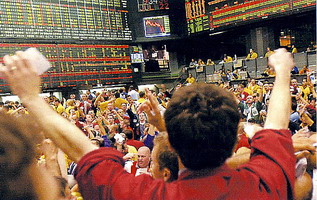

Mundus Trade & Finance Group |
|
Sugar Trading |
|
Since the discovery of sugar plantations growing in the Middle East by
It is estimated that over 46,000 metric tons of sugar will be imported into various countries around the world in the 2008/2009 period. The largest importer of sugar is Africa, which is set to import well over 7,000 tons in the coming year. This is a great deal more than developed nations such as the United States of America, which is forecast to import just over 2,000 tons of sugar in the same period. In spite of being a fairly large producer of sugar itself, the EU is still set to import over 3,500 tons of sugar in the 2008/2009 period. At the time of writing, sugar prices are currently in a overall downward trend, due in most part to high levels of global production over the past year or two. India in particular has made great strides forward in sugar production, and whilst it has not exported a great deal of its sugar in the past due to fears that the price of sugar could plummet if the market becomes flooded, it is now beginning to make forays into the export market. Even with India exercising restraint, in 2008 it is expected that global sugar supply will outstrip demand by around eleven million tons, roughly half of the volume of Brazil’s total yearly sugar exports. Tariffs The global sugar market it not as simple as it appears. This is because many countries also produce their own sugar, and therefore lobby groups and some politicians have a vested interest in their citizenry buying sugar from local producers rather than offshore producers. In order to encourage people to buy local sugar, local sugar production is subsidized by the government in many countries, and at the same time as heavy tariffs are levied on imported sugar, driving up the cost to the importer even in times where sugar prices may be relatively low on the world markets. Countries such as the United States and the European Union make exceptions on these tariffs for sugar which is exported from third world nations. This is in order to help support the delicate economies of these nations, and help stimulate their growth. Sugar Commodity Markets Sugar is traded on several commodities markets, including the NYBOT – now known as Intercontinental Commodities Exchange (ICE) , the London Futures Exchange (LIFFE), the Coffee Sugar and Cocoa Exchange (CSCE), and the Commodity Exchange, Inc (COMEX) to name but a few. It is wise to refer to these markets often to get a sense of where sugar prices are going. Being aware of global trends is the key to negotiating successful and profitable sugar deals. |


